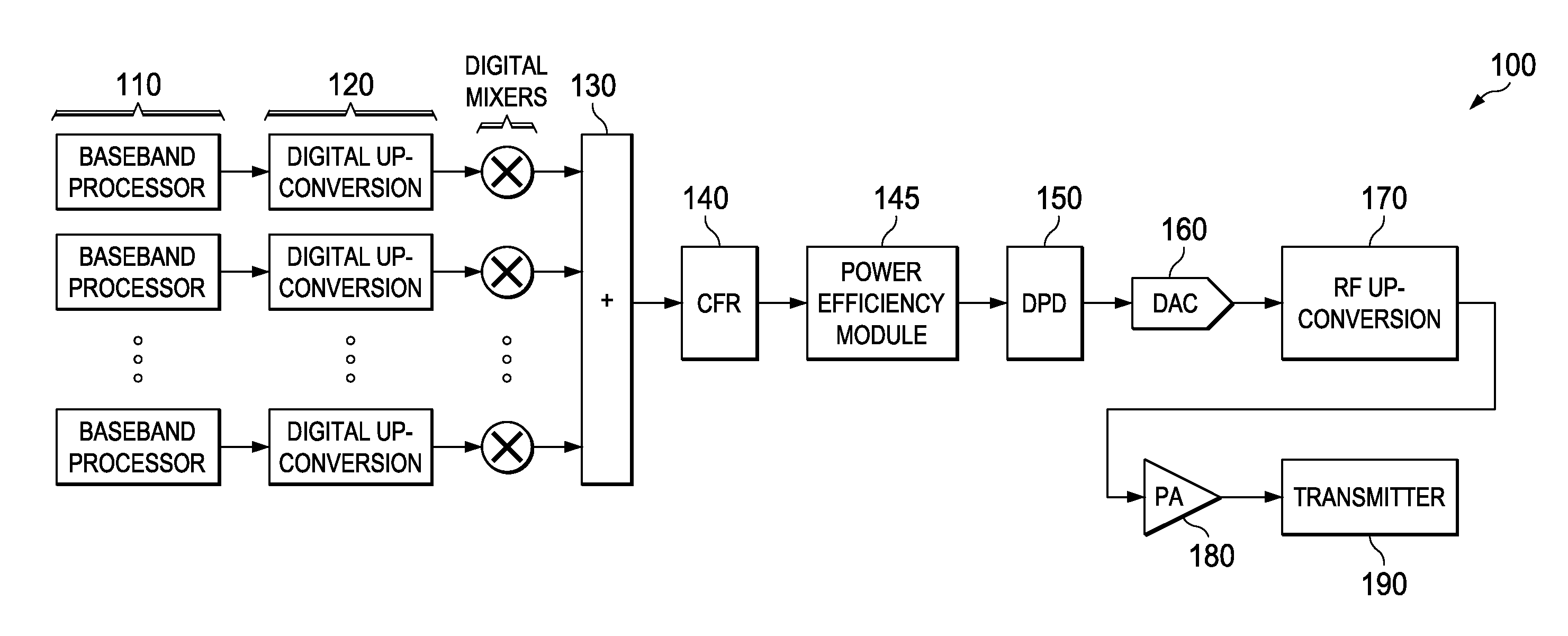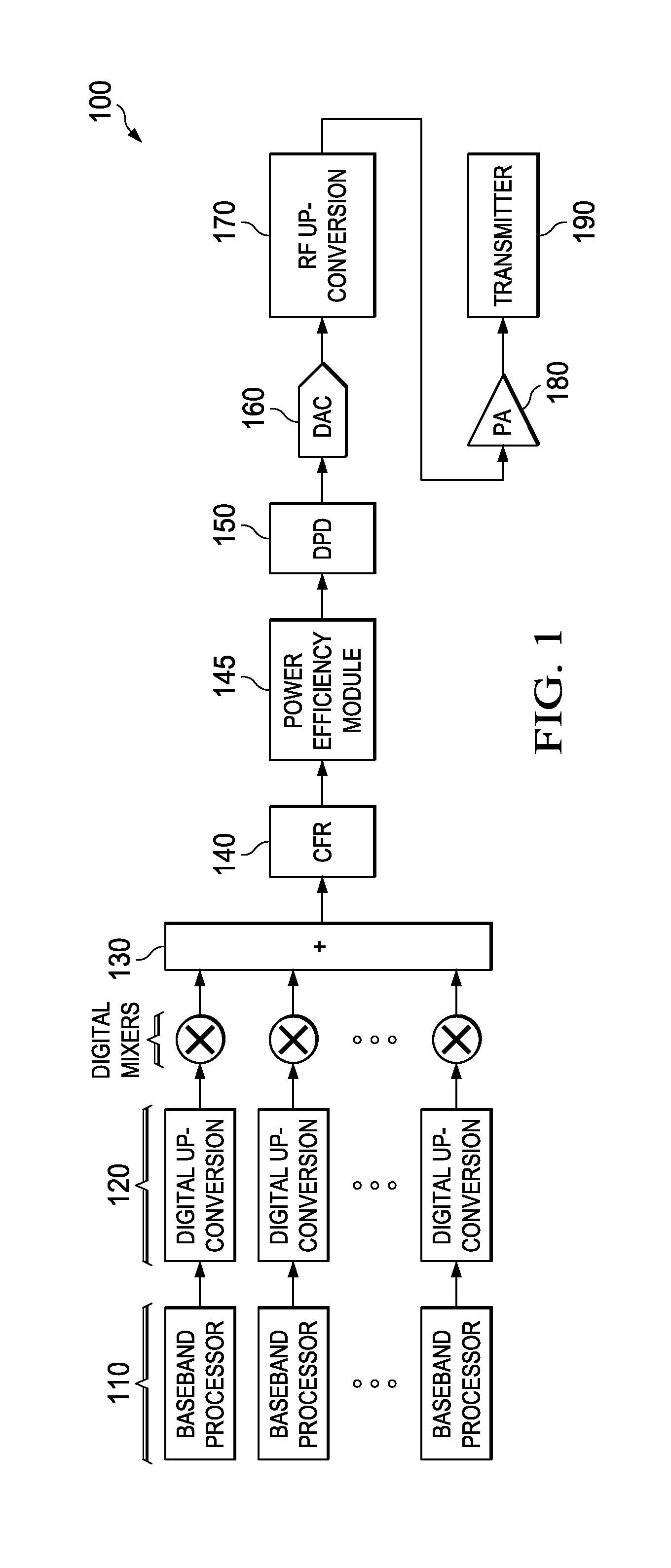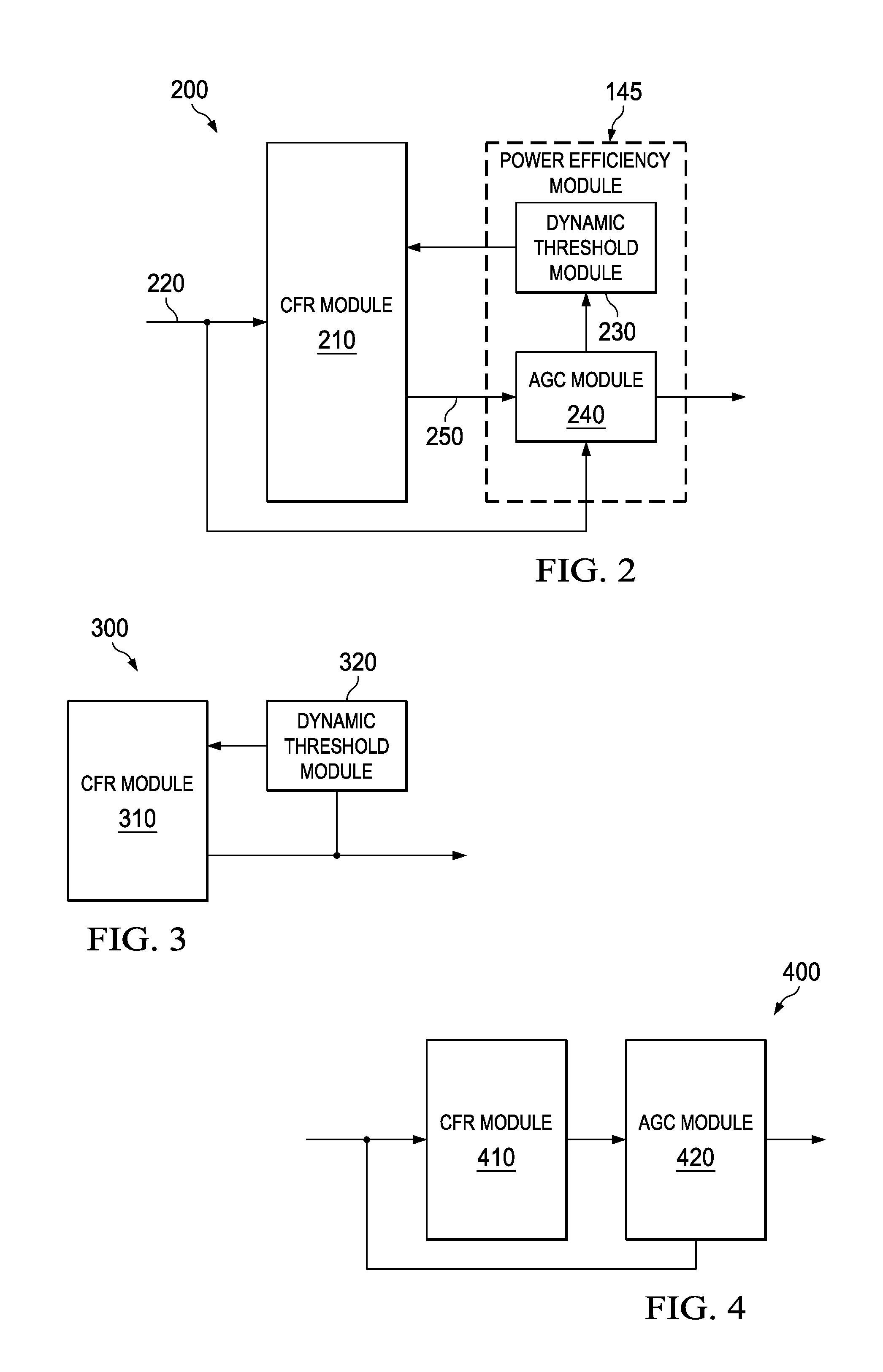Systems and Methods of Improved Power Amplifier Efficiency Through Adjustments in Crest Factor Reduction
a technology of crest factor and power amplifier, applied in the field of electromechanical devices, can solve the problems of reducing peak cancellation efficiency, pa to max-out or saturation, etc., and achieve the effect of improving power amplifier efficiency, constant input to output ratio, and constant ratio
- Summary
- Abstract
- Description
- Claims
- Application Information
AI Technical Summary
Benefits of technology
Problems solved by technology
Method used
Image
Examples
Embodiment Construction
[0014]Embodiments of the present disclosure will be described more fully hereinafter with reference to the accompanying drawings in which like numerals represent like elements throughout the several figures, and in which example embodiments are shown. Embodiments of the claims may, however, be embodied in many different forms and should not be construed as limited to the embodiments set forth herein. The examples set forth herein are non-limiting examples and are merely examples among other possible examples.
[0015]Traditional crest factor reduction algorithms may be used to improve power amplifier efficiency and linearity by reducing the peak average power ratios of communication signals aimed to restrict the signal peak power levels below a predetermined threshold, based on the peak power level that can be tolerated at the power amplifier. When the signal RMS power level drops due to reduced communication traffic, the amount of crest factor reduction applied reduces because the sta...
PUM
 Login to View More
Login to View More Abstract
Description
Claims
Application Information
 Login to View More
Login to View More - R&D
- Intellectual Property
- Life Sciences
- Materials
- Tech Scout
- Unparalleled Data Quality
- Higher Quality Content
- 60% Fewer Hallucinations
Browse by: Latest US Patents, China's latest patents, Technical Efficacy Thesaurus, Application Domain, Technology Topic, Popular Technical Reports.
© 2025 PatSnap. All rights reserved.Legal|Privacy policy|Modern Slavery Act Transparency Statement|Sitemap|About US| Contact US: help@patsnap.com



